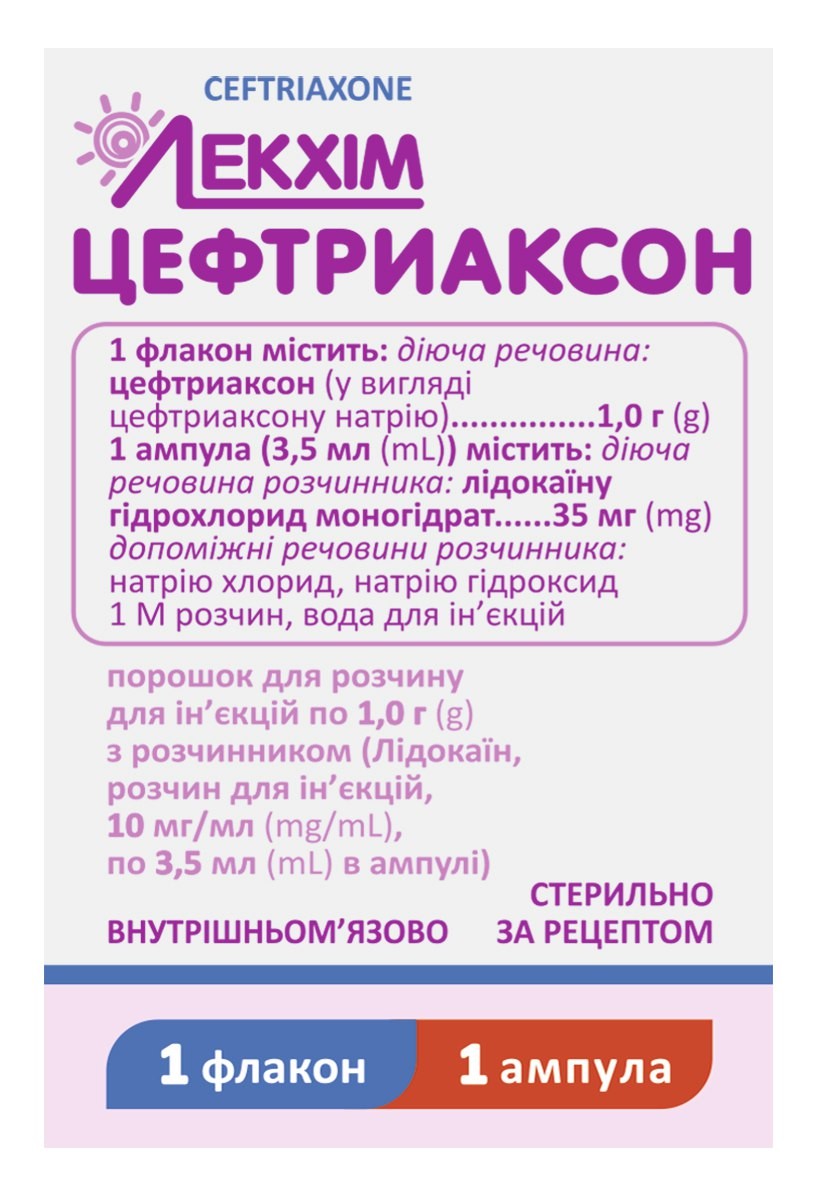
Ceftriaxone + Lidocaine
General properties
Antibacterials for systemic use. Other beta-lactam antibacterials. Third-generation cephalosporins. Ceftriaxone.
Ceftriaxone is indicated for the treatment of the following infections when caused by susceptible bacteria:
-
respiratory tract infections, especially pneumonia, and ear, throat and nose infections;
-
abdominal infections (peritonitis, biliary and gastrointestinal infections);
-
renal and urinary infections;
-
genital infections, including gonorrhea;
-
sepsis;
-
bone, joint, soft tissue, skin, and wound infections;
-
infection in immune compromised patient;
-
meningitis;
-
disseminated Lyme borreliosis (stage II and stage III);
Perioperative prevention of infections during surgical interventions on the gastrointestinal tract, bile ducts, urinary tracts and during gynecological procedures, but only in cases of potential or known contamination.
Consideration should be given to official guidelines on the appropriate use of antibacterial agents, in particular, recommendations for the prevention of antibiotic resistance.
Hypersensitivity to ceftriaxone, to any other cephalosporin. History of severe hypersensitivity (e.g. anaphylactic reaction) to any other type of beta-lactam antibacterial agent (penicillins, monobactams and carbapenems). Ceftriaxone is contraindicated in: Premature neonates up to a postmenstrual age of ≤41 weeks (gestational age + chronological age)*. Full-term neonates (up to 28 days of age): with hyperbilirubinaemia, jaundice, or who are hypoalbuminaemic or acidotic because these are conditions in which bilirubin binding is likely to be impaired*; if they require (or are expected to require) intravenous calcium treatment, or calcium-containing infusions due to the risk of precipitation of ceftriaxone-calcium salt (see sections “Special warnings and precautions for use” and “Undesirable effects”). * In vitro studies have shown that Ceftriaxone can displace bilirubin from its serum albumin binding sites leading to a possible risk of bilirubin encephalopathy in these patients.
Pharmaceutical characteristics
White or off-white crystalline powder.
Store in original package at temperature not exceeding 25 °С. Keep out of reach of children.
